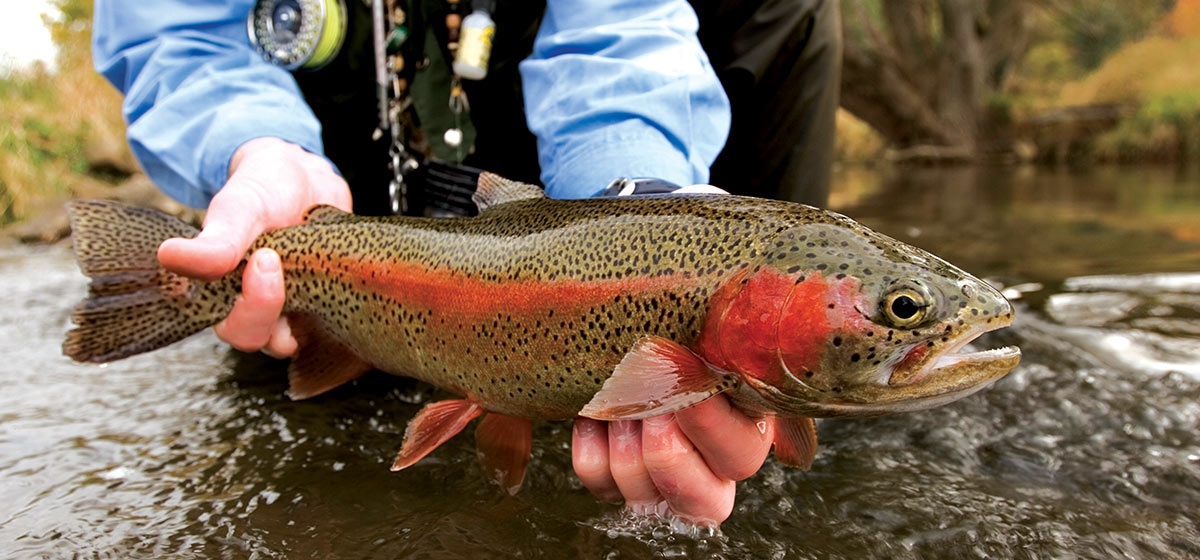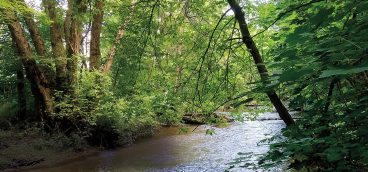
Since 1926, when Zane Grey published “Tales of the Angler’s Eldorado,” fishermen have trekked to New Zealand—the other side of the world— to stalk the monstrously huge and famously wary rainbow and brown trout.
If only they’d known about Spruce Creek, Pa. If only I’d known…
I knew Spruce Creek was famous for fly fishing—that Jimmy Carter and Dwight Eisenhower loved to fish there. I just didn’t know how big the trout were. And I didn’t know that I’d catch bigger trout two-plus hours from Pittsburgh than I did in New Zealand.
I went to Spruce Creek in June to visit HomeWaters, a private fishing club that has 10 miles of fishing in Central Pa. 2 miles of streams in Erie (for steelhead) and another 8 in Colorado.
What I didn’t realize until shortly before I arrived was that HomeWaters was the club that was in the news for several years for a lawsuit that often appeared in the media as a battle between the dark forces of privatization versus the God-given right of Every Man to dip his line in free-flowing waters.
The four-plus-year lawsuit ultimately focused on whether a 1.3-mile stretch of the Little Juniata River in Huntingdon County was navigable. The state argued it was—and that it was therefore public water—and the founder of HomeWaters, Donny Beaver, argued it wasn’t. If you look at the stretch of water in question, you wouldn’t think of it as navigable—maybe the odd kayak but not much else. But in 2007, the court ultimately sided with the state, citing the river’s historical use as a commercial highway from Revolutionary War times to the age of the railroad. That ruling means that the section of the Little Juniata up to the high-water mark is again open to the public.
The courtroom loss ultimately wasn’t as big a deal for Beaver because he had expanded the number of miles under lease, and that stretch of “the Little J” played a small role in the HomeWaters portfolio.
A Central Pennsylvania native, Beaver became successful creating industrial clean-up products. He grew up hunting and fishing on his grandparents’ property around Raystown Lake. After much of that land was submerged by the dam that expanded the lake, years later Beaver sought to recreate a place where families could go to experience fishing and the outdoors. So he worked with private landowners, cobbling together a series of leases in creating what ultimately became HomeWaters.
What he’s created is essentially a fisherman’s paradise. The club’s campus has a combination of structures—some new, including the beautiful lodge buildings with attractive and comfortable rustic décor that are designed to accommodate individual anglers as well as groups of up to 35 or 40 (HomeWaters hosts benefits for a number of nonprofits, including Magee Women’s Cancer Research Institute). And two of the buildings are very old. The “Bark House”— named for its poplar bark siding—was built in the 1790s, and the old stone clubhouse was built a few years later. A delicious breakfast, lunch and dinner are available every day.
But the big thing is the fishing, and the fish are enormous (one of the beats is aptly nick-named “Jurassic Park,” for the size of the monsters it contains). The biggest fish reach 15 pounds and 34 inches. Each year, members catch a few over 30 inches, with rainbows and browns in the 26–30-inch range being a weekly occurrence.
HomeWaters requires that you fish with a guide on almost all of its waters, and while that may feel unnecessary to highly skilled anglers, I appreciated the help. I was fortunate to have Joe McMullen as my guide. A former biology teacher, McMullen owned and ran the hatchery on Spruce Creek for many years and is the most knowledgeable fisherman I’ve ever met. He’s travelled the country showing universities how to raise fish and use circulation and filtration systems to reuse water. And he’s guided famous people from Jimmy Carter on down.
At 76, Joe was awaiting a hip replacement and moved carefully and slowly down the rock embankment to the water. I wondered how he could possibly see well enough to tie the various flies and nymphs I’d use. I can barely see the eyelet even when I’m wearing glasses and special magnifiers. When I asked how he could see so well, he recalled a country music song about a car that had flat tires, a broken transmission and a cracked block, “but the radio still works.” Joe tied flies and fixed the occasional massive tangles I created like magic.
As I waded into Spruce Creek, Joe leaned against a rock, giving me pointers, filling my head with arcane but fascinating details of the fish and stream life and recounting some of the famous men he’s guided. And when I inquired, among other things, as to how my casting was, he said things like, “A good cast isn’t the one that looks best— it’s the one that catches a fish.”
Many of the fish are stocked as 9–11-inchers—from the fishery Joe used to own—and they get so big because in many of the beats they’re fed most of the year, and the HomeWaters beats along Spruce Creek, Penn’s Creek and Yellow Creek are all catch and release. The fish are essentially HomeWaters’ business partners, and all beats are rested 50 percent of the time.
These giant rainbows and browns are fun to catch. And despite the fact that they’re nothing like the wary wild trout of New Zealand, you have to be pretty good to land a big one. And I did land some nice ones. The biggest fish of the day was an enormous brown which I fought for 10 minutes as it made spectacular leaps, shot down stream, then turned and made a beeline right back to me, leaving me scrambling to take up the slack. Why is this the fish I’ll remember for years? Because he got away…
The streams are quiet and beautiful, the fish huge and plentiful, and the guides friendly and helpful. Not surprisingly it comes with a price tag. The club has 150 members, with room for a handful more year-round members and probably 50 more seasonal members. Costs range from $4,000 per year for the seasonal “Escape” membership to $8,900 per year for the year-round “Horizon” membership, plus a $4,500 initiation fee for seasonal members and a $22,000 deposit for year-round members.
But there is another option if you want to check it out: $999 for one or two anglers, which includes overnight lodging, with breakfast, lunch and dinner and a full day of guided fishing.
But be forewarned—the fish may not be the only ones to get hooked.



